
ONE OF THE HIGHEST-EARNING COLLEGE ATHLETES ON THE PLANET SAYS a little prayer. Sam Hurley, a University of Texas sophomore, prays that God gives him the wings represented by an angel tattoo on his left calf-to carry him over the high-jump bar. The overwhelming majority of college athletes who earn in the neighborhood of $1 million or more to market their name, image, and likeness (NIL), as Hurley does, perform athletic feats before 50,000 to 100,000 fans in packed football stadiums or in sold-out basketball arenas. But a few hundred eyes, at most, are fixed on Hurley as he attempts to win the Texas Invitational.
On this April afternoon in Austin, Hurley, 19, soars, arches his back over the bar, and flops on the mat. To a smattering of applause, he hops up, pounds his hand against his chest, and points one finger up in the air. He's clinched his second meet title of the outdoor track-and-field season. "It was a good day," Hurley says afterward, "to be great." July 1 marks the second anniversary of the day that college athletes were given the freedom to profit off their personal brands. After years of sustaining hits in the courts and in the media for allowing schools, administrators, and coaches to enrich themselves on the backs of football and basketball players, the NCAA relented, and dropped its arcane rules preventing athletes from signing third-party sponsorship deals. Opendorse, a company that connects student athletes with businesses, expects NIL earnings to top $100 million by the end of 2023.
This story is from the July 03, 2023 edition of Time.
Start your 7-day Magzter GOLD free trial to access thousands of curated premium stories, and 9,000+ magazines and newspapers.
Already a subscriber ? Sign In
This story is from the July 03, 2023 edition of Time.
Start your 7-day Magzter GOLD free trial to access thousands of curated premium stories, and 9,000+ magazines and newspapers.
Already a subscriber? Sign In

TV SHOWS
An artistic triumph. A record-breaking 18 Emmy wins. An all-time viewership high for FX.
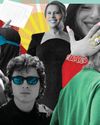
MOVIES
If you read only the synopsis of Babygirl before seeing it, you might imagine it's an erotic age-gap thriller about the workplace power dynamic between men and women.

BOOKS
Percival Everett's reimagining of Adventures of Huckleberry Finn, which won a National Book Award, is a sweeping story centering on Jim, the enslaved sidekick in Mark Twain's classic adventure tale.
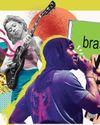
ALBUMS
Singer Beth Gibbons hasn't released much music in the 30 years since her iconic band Portishead stormed out of the gate with seminal trip-hop record Dummy. Nor has she spoken to the press much, gaining a reputation for intense privacy.
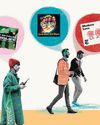
PODCASTS
The most engrossing podcast Dan Taberski has produced since Missing Richard Simmons, Hysterical investigates a mysterious illness that spread among high school girls in Le Roy, N.Y., beginning in 2011, in what is believed to be the largest case of mass hysteria since the Salem witch trials.
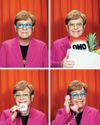
Elton JOHN
Elton John has no address. Visitors to his home are given three names: the name of a house, the name of a hill, and the name of a town, which is near Windsor, as in Windsor Castle, where King Charles III lives.
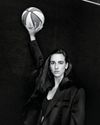
Caitlin CLARK
A Fever coach has tasked me with standing under the basket to retrieve her misses. But as Clark, the two-time college national player of the year for the University of Iowa, reigning WNBA Rookie of the Year from the Indiana Fever, and emergent American sports icon, runs all over the court to launch long-range bombs, I barely have to move. Swish, swish, swish. She hits 14 shots in a row. A dozen in a row. Eleven in a row. Nine in a row. Another nine.

Lisa SU
It's the day after the U.S. presidential election, and like much of the nation she was awake until the early hours, transfixed as the results came in, only tearing herself away once it became clear that Donald Trump had won.

Donald TRUMP-THE CHOICE
A once and future President whose influence dominated this year

Mental Health Levels Up
2024's progress hints at things to come